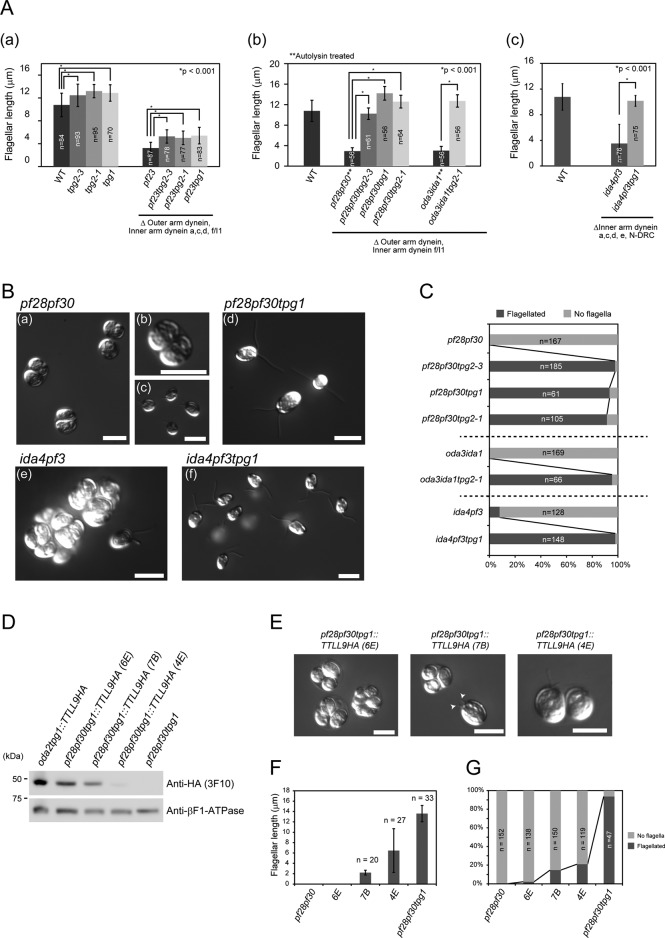FIGURE 2:
tpg2-1 and tpg1 mutations increase the flagellar growth in mutants lacking multiple components of the axoneme. (A) (a) Flagellar length in WT, tpg2-3, tpg2-1, tpg1, pf23, pf23tpg2-3, pf23tpg2-1, and pf23tpg1. (b) Flagellar length in pf28pf30 (autolysin treated), pf28pf30tpg2-3, pf28pf30tpg1, pf28pf30tpg2-1, oda3ida1 (autolysin treated), and oda3ida1tpg2-1. (c) Flagellar length in WT, ida4pf3, and ida4pf3tpg1. SDs for each measurement are shown as bars. Asterisks indicate statistically significant differences (t test, p < 0.001). (B) (a–c) pf28pf30, (d) pf28pf30tpg1, (e) ida4pf3, and (f) ida4pf3tpg1 observed by DIC microscopy. In c, pf28pf30 cells were treated with autolysin. (C) Ratio of flagellated cells under normal conditions (no autolysin treatment). (D) Western blot of whole cells of the indicated strains probed with anti–HA-tag (3F10) and anti–βF1-ATPase antibodies (loading control). (E) Three different pf28pf30tpg1::TTLL9HA transformants (6E, 7B, and 4E) observed by DIC microscopy. The arrowheads in the middle image indicate stumpy flagella. Flagellar length (F) and presence or absence of flagella (G) in pf28pf30tpg1::TTLL9HA transformants and controls. All of the strains presented here were cultured in M medium.

